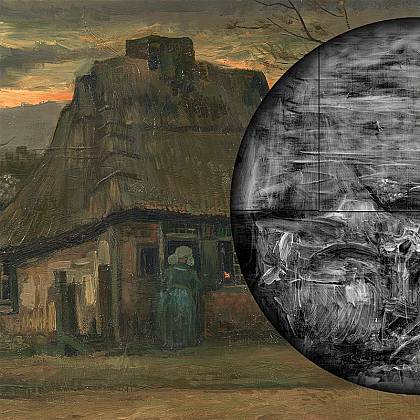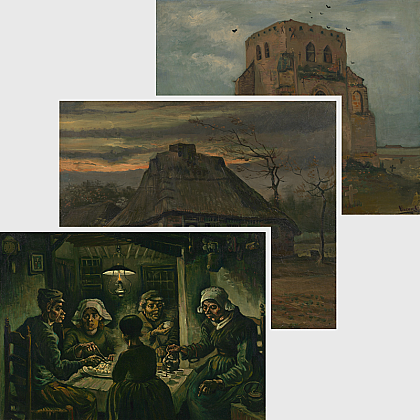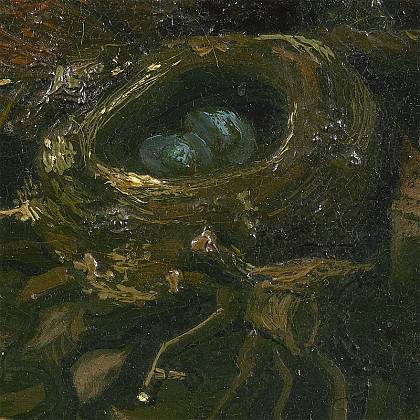'Fingerprint' of the canvas
The Cottage
The Cottage and the still life Baskets of Potatoes are painted on canvas from the same roll. This discovery was made with a computer program.
The X-ray photo shows that the threads in the canvas (the warp and weft) vary in thickness, and the distances between threads are not always equal. By digitally scanning the X-ray photo and analysing it, computer engineers created a ‘fingerprint’ of the canvas that was used.
They then compared it with warp-and-weft images of other paintings. The cottage matched not only Baskets of potatoes, but also a few of the other works that Van Gogh made in Brabant (NL).
Matches in warp and especially weft can help to determine the sequence in which Van Gogh’s pictures were made. They also reveal how the artist worked.
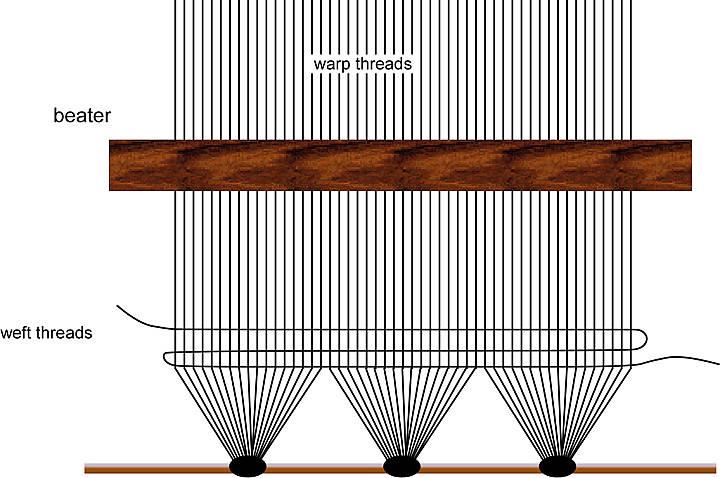
In the 19th century, canvas for painters was made in factories. A large loom held the warp threads in place while the weft threads were woven through them. Then the canvas was coated with a ground (a bottom layer).
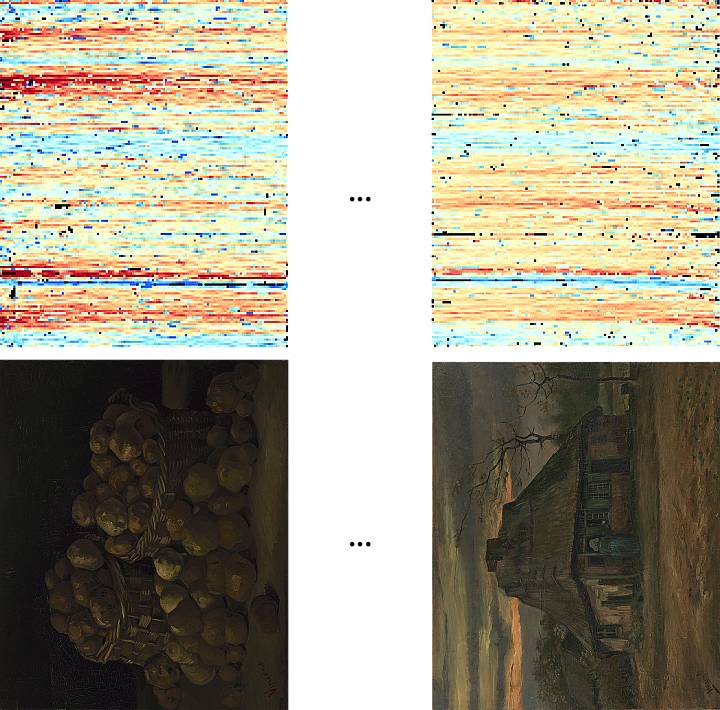
The weft threads in The Cottage and Baskets of Potatoes follow the same pattern. This shows that the canvases were cut side by side along the width of the roll of canvas.
Weave maps by Don H. Johnson,
Thread Count Automation Project (TCAP)
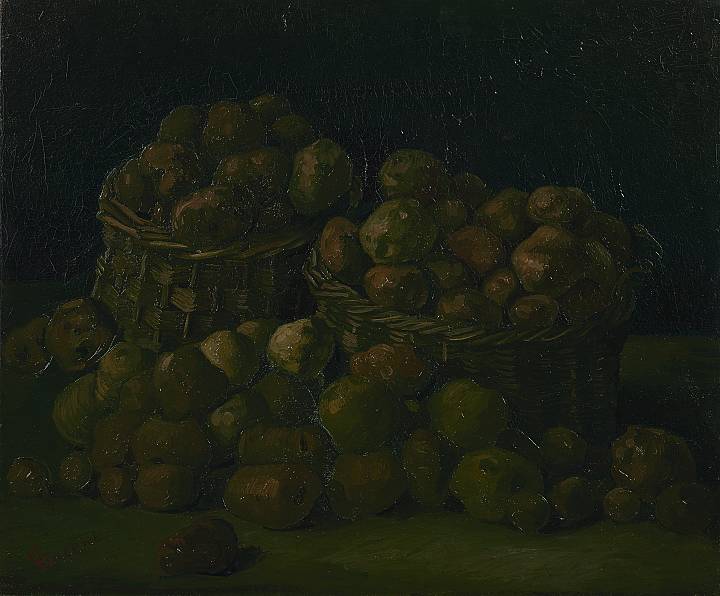
In the period 1888-1890, Van Gogh often made his own supports (for his paintings). He would buy a role of primed canvas, cut off a piece, and stretch it on a wooden stretcher frame. This allowed him to choose the dimensions and type of canvas. He made several canvases with different dimensions from the same roll (c. 10 x 2.10 m).
Baskets of Potatoes, 1885
Van Gogh Museum, Amsterdam (Vincent van Gogh Foundation)
